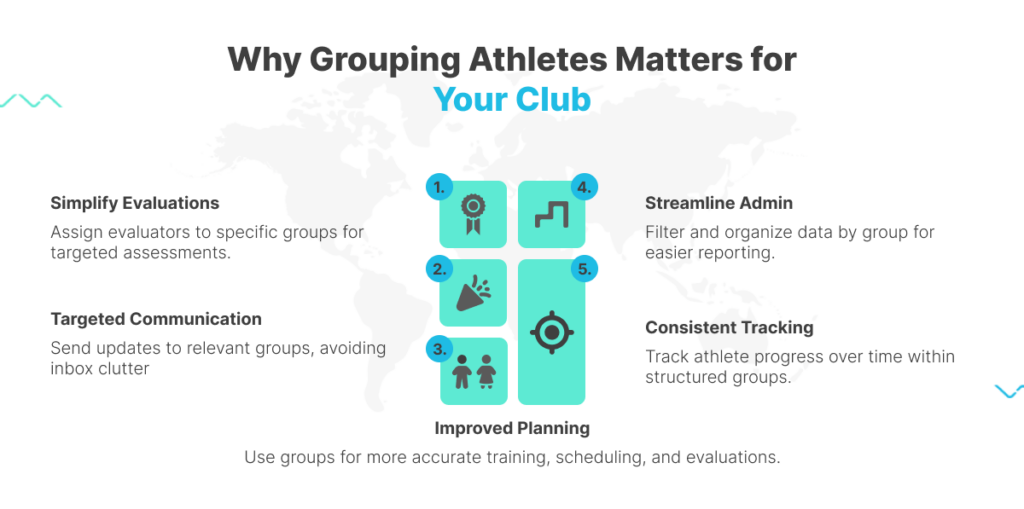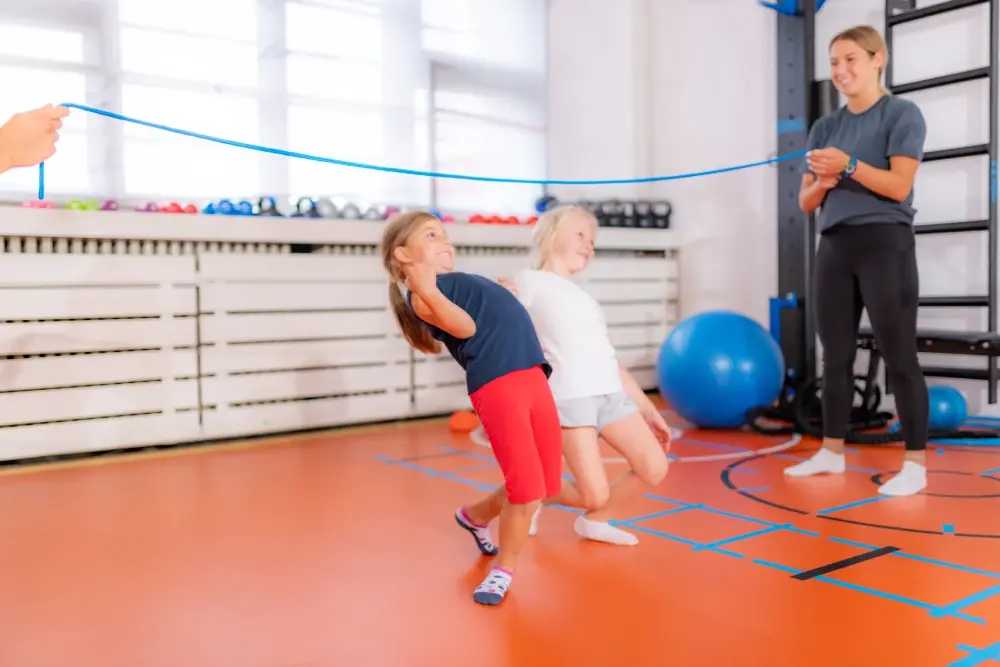Table of Contents
ToggleIn every sports club, grouping athletes properly is essential. Whether you’re managing a seasonal program, splitting teams, or tracking training cohorts, how you organize your participants shapes how well you can coach, communicate, and evaluate.
Yet many clubs still use manual rosters, spreadsheets, or outdated tools that make organization feel more like a guessing game than a structured process.
The Problem with Manual Sorting
When grouping athletes by hand, mistakes happen:
- Athletes get left out or placed in the wrong group
- Evaluators waste time searching through full rosters
- Parents receive updates not relevant to their child’s group
- Coaches struggle to plan sessions around actual team structures
Without the right system, scaling becomes messy.
What Are Checklick Groups?
Checklick Groups is a feature that lets clubs sort athletes by:
- Program
- Season
- Age or level
- Coach
- Team
This means instead of managing everyone on one list, you work within targeted groups making evaluations, communications, and session planning much smoother.
Key Benefits of Using Groups
Checklick Groups are designed to support daily operations across clubs of all sizes. Here’s how it helps:
- Easier Evaluations
Assign evaluators to a specific group and view only relevant athletes during assessments. - Targeted Communication
Send updates, reminders, or progress reports to one group without cluttering inboxes of others. - Simplified Admin
Filter by group to pull reports or organize evaluations more efficiently. - Consistent Athlete Tracking
Track development over time by organizing data within a consistent group structure each season.

How to Set Up Checklick Groups
Setting up groups is quick and intuitive:
- From your Checklick dashboard, go to the People tab
- Use filters to select your athlete subset (by season, program, or custom tag)
- Click “Create Group” and name your group
- Add or remove athletes as needed
You can create as many groups as your club requires and update them at any time.
Real Use Cases from Sports Clubs
- A gymnastics club separates athletes by age brackets to deliver level-appropriate training and communication
- A sailing school creates seasonal groups for summer, fall, and spring to manage certifications and evaluations
- A taekwondo club uses belt-level groups for evaluation days to avoid confusion and missed assessments
Whether you’re a single-sport club or multi-program organization, this tool adapts to your structure.
Improve Evaluations and Communication
Clubs using Checklick Groups report:
- Fewer evaluation errors
- More precise reporting
- Better communication with athletes and families
- Noticeably reduced admin workload for clubs
By focusing on the right group at the right time, you avoid information overload and ensure every athlete receives the attention they need.
Start Organizing Smarter Today
If you’ve ever sorted athlete lists manually or struggled with bulk communications, Checklick Groups can make your work easier from day one. No more version confusion, missed messages, or redundant tasks.
Group athletes your way and stay in control of your programs.
Frequently Asked Questions (FAQs)
Q: Can athletes be in more than one group?
Yes. You can add an athlete to multiple groups if they participate in multiple programs or seasons.
Q: Do groups carry over between seasons?
Groups can be duplicated or adjusted seasonally to match your evolving programs.
Q: Are groups visible to athletes or parents?
No. Groups are for admin and evaluator use only.
Q: Can I export group data?
Yes. You can export athlete information by group for reporting or session planning.

